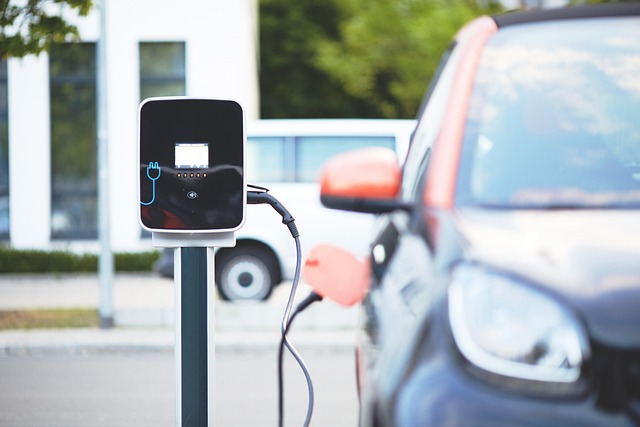“Learn how to register your car in California with our step-by-step guide. Understanding the state’s requirements and gathering essential documents are crucial first steps, including proof of insurance, title, and a valid driver’s license. Visit a local California Department of Motor Vehicles (DMV) office or complete the process online. Ensure accurate VIN verification for peace of mind and smooth sailing through the registration process.”
- Understand California Vehicle Registration Requirements
- Gather Necessary Documents for Car Registration
- Visit a California Department of Motor Vehicles (DMV) Office
- Complete the Vehicle Registration Application Process
- Verify Vehicle Identification Number (VIN) with DMV
Understand California Vehicle Registration Requirements

Before registering your car in California, it’s crucial to understand the state’s specific requirements for vehicle registration. The California Department of Motor Vehicles (DMV) mandates several steps, including a thorough vin verification process. This involves confirming the vehicle’s identity using its unique Vehicle Identification Number (VIN). As part of this, you’ll need to present valid documentation such as proof of ownership and insurance. Additionally, your car must meet safety and emission standards set by the state.
One efficient method for handling these requirements is through mobile vin verification services. These services offer a convenient alternative to traditional DMV visits, allowing you to complete the vin inspection process from the comfort of your home or workplace. This approach not only saves time but also streamlines the overall registration procedure. Remember that accurate and timely completion of these steps is essential for a smooth car registration experience in California.
Gather Necessary Documents for Car Registration

Before you start the car registration process in California, make sure to gather all the essential documents. The California Department of Motor Vehicles (DMV) requires specific papers to verify your vehicle’s identity and ensure compliance with state regulations. One crucial step is to obtain a Vehicle Identification Number (VIN) verification report. This can be done through a mobile vin verifier or by completing a formal vin inspection.
The VIN, located on the vehicle’s chassis, is a unique identifier that provides vital information about the car, including its make, model, year, and production location. By submitting a request for VIN verification, you ensure that your car meets all legal standards before registration. This process is straightforward and can often be completed online or through a mobile vin verification service, making it more convenient for California residents to register their vehicles promptly.
Visit a California Department of Motor Vehicles (DMV) Office

To begin the registration process for your vehicle in California, start by visiting a local California Department of Motor Vehicles (DMV) office. This is where you’ll complete essential paperwork and undergo critical steps like VIN verification. A DMV representative will guide you through the necessary procedures, ensuring that all documents are in order.
One convenient option to expedite this process is to use a mobile vin verifier for an initial inspection. This service allows you to check your vehicle’s history and condition remotely, providing peace of mind before you visit the DMV. By combining these steps—a physical visit to the DMV and a mobile VIN verification—you can streamline car registration in California, making it a smoother and more efficient experience.
Complete the Vehicle Registration Application Process

To complete the vehicle registration process in California, you’ll need to fill out a Vehicle Registration Application (Form DV304). This form requires accurate and up-to-date information about your vehicle, including its make, model, year, and unique identification number—the Vehicle Identification Number (VIN). Start by visiting the California Department of Motor Vehicles (DMV) website to access the application and ensure you meet all eligibility requirements.
During the application process, you’ll be asked to validate your VIN through a DMV-approved method like a mobile VIN inspection or verification service. This step ensures the vehicle’s authenticity and helps prevent fraud. After submitting your application along with the necessary fees and documents, the DMV will review your information and issue a registration certificate if everything is in order.
Verify Vehicle Identification Number (VIN) with DMV

Before registering your car in California, it’s crucial to ensure that your vehicle’s Vehicle Identification Number (VIN) is legitimate and matches the data on record. One effective way to verify this is by utilizing a mobile vin inspection or vin inspection service. Many reputable companies offer these services, allowing you to confirm the VIN accuracy from the comfort of your home or even before visiting the DMV.
By cross-referencing the VIN with the California Department of Motor Vehicles (DMV), you can prevent potential issues down the line. The DMV will use this unique identifier to access information about your car’s history, ensuring it meets all safety and legal standards. This step is vital, as a matching VIN ensures that the vehicle is as described and helps protect you from fraud or identity theft during the registration process.
Registering your car in California involves understanding state requirements and gathering essential documents. By visiting a local DMV office, completing the registration application process, and verifying your vehicle’s Identification Number (VIN) through their system, you can ensure your vehicle complies with California’s regulations. This straightforward procedure not only legalizes your car but also facilitates smoother interactions with law enforcement and road services. Remember to keep your registration up-to-date for a stress-free driving experience in the Golden State. Additionally, always verify your VIN at the DMV for accurate record-keeping during the registration process.
